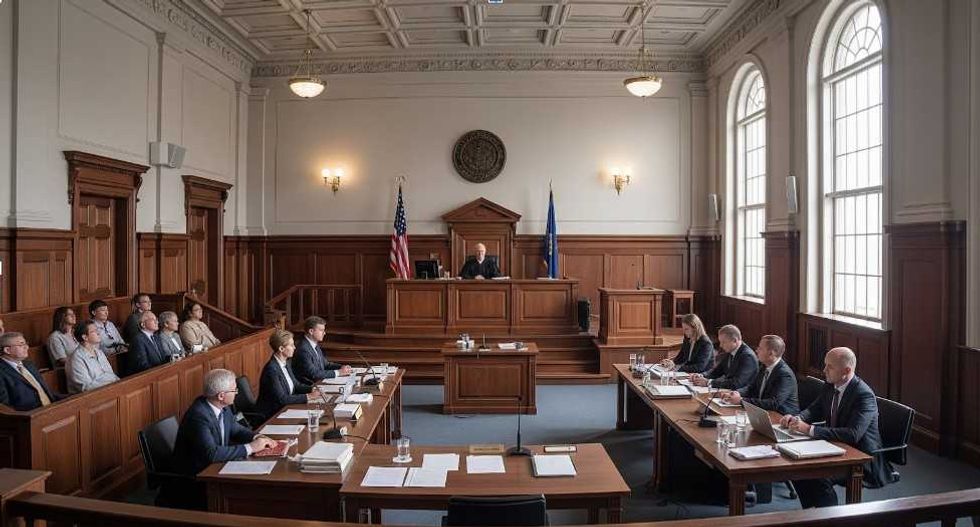Insecurity. It plagues all of us from time to time, from the greatest mathematicians to the most deprived poets. We see it on college campuses across the world and we can find it in the news, everywhere from the sideways glances of presidential candidates to collections of strange artifacts in peoples’ homes. Recently, one of the most prevalent examples of this has been the concept of “leftover” women in China. Defined as unmarried women over the age of 27 by China's Women’s Federation in 2007, and as an even more devastating 25 in more recent years, “leftover women,” or sheng nu, are stigmatized in China. Leta Hong Fincher of The New York Times proposes the reason for this is that in 2007, China’s State Council appointed the Women’s Federation as a primary “implementer” of a policy to reverse the sex-ratio imbalance in the population. The stigmatization of “leftover women” in China may pressure otherwise happy and independent women into marrying. What greater source of insecurity for successful, highly educated women could there be than for their government to tell them that they are hurting their own society by not marrying?
Insecurity is not a foreign concept in this country, either, and is often tied to the idea of beauty. Those renowned for their deeds and minds have been monumentally insecure. For example, first lady Eleanor Roosevelt said that her one regret was that she hadn’t been as pretty as she wished. The young, the old, the male, the female, the undefined - we all yearn for a more beautiful face, a more attractive body. One of the most prevalent manifestations of this universal insecurity is in eating disorders. College campuses have gained more and more awareness about this issue, posting signs to deter those who suffer from them and offering counseling. And, rightly so, as, according to the National Eating Disorders Association, data from one college shows an increase in total eating disorders from 23 to 32% in females and from 7.9 to 25% in males over 13 years.
In her book “Girl in the Mirror: Mothers and Daughters in the Years of Adolescence,” Nancy L. Snyderman, M.D., describes eating disorders as the result of not only cultural constructs such as an obsession with beauty, but also other genetic, psychological, and sociocultural factors. Dr. Anne Becker of Harvard Medical School says that some cases are also the result of an adolescent’s attempt to cope with “‘intolerable affect,’” something they cannot control in their lives.
In the past, eating disorders were not considered “disordered or pathological,” but simply weird behavior. Bulimia nervosa was not even clinically identified as a disorder until 1979. Perhaps it is due to both the general lack of acknowledgement of eating disorder cases and the increasing cultural pressure brought about by modern marketing schemes that the incidence of documented diagnoses of bulimia has continued to rise. Thirteen percent of adolescents suffer from eating disorders, and Snyderman estimates some fifteen percent hang on the periphery, experiencing “borderline disordered eating.” The statistics are even more terrifying when only 30 percent of cases will have partial recovery from disorders, and 20 percent will not improve at all.
Insecurity also plays a large part in teenage depression. Though boys and girls are equally at risk for depression, by fifteen the ratio of depressed girls to boys doubles, writes Snyderman. And depression caused by insecurity has even been found to contribute to physical pain, as shown in a study conducted in 2009. At the Université de Montréal, Sainte-Justine University Hospital Center, and McGill University, insecure adolescents were found to “experience more intense pain in the form of frequent headaches, abdominal pain and joint pain,” and were more likely to be depressed. Thus, the cause of daily headaches many college students experience may be more than just the lack of sleep the night before or the heavy weight of academic pressure, but nagging insecurities.
While insecurity may be a constant part of our lives, our current perception of beauty, especially in its marketing, may be a contributing factor. In the U.S. we may define a beautiful woman as an unhealthily skinny model, and, potentially, in China, as a less successful, less educated, and more marriage-minded woman. However, though companies bombard us left and right with what our image of beauty should be, the definition has remained relatively elusive. It has been debated and philosophized over for centuries, all the way back to Plato in 400-300 BC, who defined it simply: “What is beautiful is good.” James Joyce wrote about beauty in Portrait of the Artist as a Young Man, describing it as a rare phenomenon, an “image [that] had passed into his soul for ever and no word had broken the holy silence of his ecstasy….” Even the modern Oxford English Dictionary defines it as “that quality of a person or thing which is highly pleasing or satisfying to the mind; moral or intellectual excellence,” a quality that is more experiential than physical. Beauty differs between cultures, between centuries, even, but the pressure to achieve some standard of beauty has never been so stifling as in today’s world. “Capitalism and the patriarchy define beauty for cultural consumption, and plaster images of beauty everywhere to stir up envy and desire,” wrote Nancy Ectoff in her book Survival of the Prettiest. The desire to achieve an image of beauty propagated by companies vying for the biggest profit has led to permanent and lasting changes to people’s bodies and perceptions of themselves. Before silicon gel implants were limited by the FDA in 1992, four hundred women were getting them every day, and in 1996, 696,904 Americans underwent “voluntary aesthetic surgery,” says Ectoff. Much of plastic surgery today consists of correcting “‘minor imperfection[s]’” that are usually only obvious to the women who have them, according to Dr. Kathy Davis, a professor at the University of Utrecht, Netherlands. The consequences of such ubiquitous media-fed obsession with beauty has led to additional difficulties among our generation. From depression to eating disorders, the science of beauty has never so much affected our collective insecurity. The question is therefore whether there really is a rhyme or reason to the beauty aesthetic, whether there is a scientific explanation for those we typically consider beautiful and those we do not.
According to Don Symons, an anthropologist at UC Santa Barbara, recent studies by psychologists Victor Johnston at New Mexico State University and David Perrett at St. Andrews University showed that men have preferences for women with “‘larger eyes, fuller lips, and a smaller nose and chin,’” smooth skin, and curvaceous bodies. This can be explained biologically, as each trait indicates the youth, health, and fertility of a woman, which are desirable characteristics in a potential mate. Many biologists and anthropologists, however, strongly disagree. For example, C. Loring Brace, an anthropologist at the University of Michigan, said, “‘The idea that there is a desirable female type tells you more about the libidinous fantasies of aging male anthropologists than anything else.’” Elain Hatfied, professor of psychology at the University of Hawaii, shares Brace’s views: “‘To think you’ve found a cultural universal is thrilling, but you don’t want to deceive yourself into thinking that biology accounts for everything.’” Others are less insulted by Symons’ ideas, but rather think that they are naive. In recent studies, Douglas Yu, a British biologist, and Glenn Shepard, an anthropologist at the University in Berkeley, found that Peruvian men preferred female body types considered overweight in Western cultures. “‘A fuller evolutionary theory of human beauty must embrace variation,’” Yu says.
Dr. Judith Langlois, a professor of psychology at the University of Texas in Austin, has a different opinion of the definition of beauty: one of symmetry, an “averaged” face. “Extremes are off-putting and generally not attractive,” Langlois says. Clearly, anthropologists and psychologists have not landed on one solution to the beauty question.A more mathematical solution based on the principles of Pythagoras himself was proposed by Dr. Stephen Marquardt, a Southern California plastic surgeon, at the end of the 20th century. Pythagoras, an Ionian Greek philosopher and mathematician of 500s and 400s BC whose namesake the familiar Pythagorean Theorem carries, found that, in music, architecture, and design, there lay a “golden ratio” to the sounds and forms that were ‘most pleasing’ to the eye and ear. Pythagoras found that the ratio, when expressed as a decimal, was 1:1.61814. Marquardt created a “golden mask” based on Pythagoras’ golden ratio by collecting photos of supposedly beautiful faces and measuring their dimensions. In them, he found several golden ratios, including mouths 1.618 times wider than noses, noses 1.618 times wider than tips of noses, and even width of front two teeth 1.618 times the height of each tooth. Marquardt also found that “the triangle formed by the nose and the mouth was a perfect acute golden triangle.” However, though the golden mask fits some beautiful people, it was by no means a universal constant, and many beautiful people defy its confines. Many so-called ugly faces also fit the mask much better than they ‘should’ have, were the golden ratio universally true. Marquardt therefore concluded that the human race has evolved to be generally attractive across the board. Thus, though there is a Golden Mask, there is no one standard of beauty.
Despite all our research and theories, beauty remains an inexplicable experience. And yet we place so much value on it that disordered eating and depression across the country, and among our generation in particular, is becoming more and more prevalent. Yet there are those trying to reverse this process, such as The Dove Campaign for Real Beauty. One of their most famous videos, “Evolution,” published in October 2006 with over 17 million views on YouTube, takes a model through the process before and after a photo is taken, and shows how many changes are applied before she becomes the beautiful girl in the ad. The final line of the video reads: “No wonder our perception of beauty is distorted.” In another video, the 2013 “Dove Real Beauty Sketches,” an artist asked women to describe themselves from behind a curtain, and then asked strangers to describe them. The two sketches showed drastic differences between external and self perception, and ended with the line: “You are more beautiful than you think.”
Science has revealed to us that though there is no one answer, in trying to find it, we are hurting ourselves physically and emotionally. We must decide for ourselves how to define beauty and how to react to it. Physical appearance is in no way the only measure of beauty. As Henry James wrote of George Eliot when she was 49: “‘She is magnificently ugly...She has a low forehead, a dull grey eye, a vast pendulous nose, a huge mouth, full of uneven teeth...Now in this vast ugliness resides a most powerful beauty which, in a very few minutes, steals forth and charms the mind, so that you end as I ended, in falling in love with her.’”





















